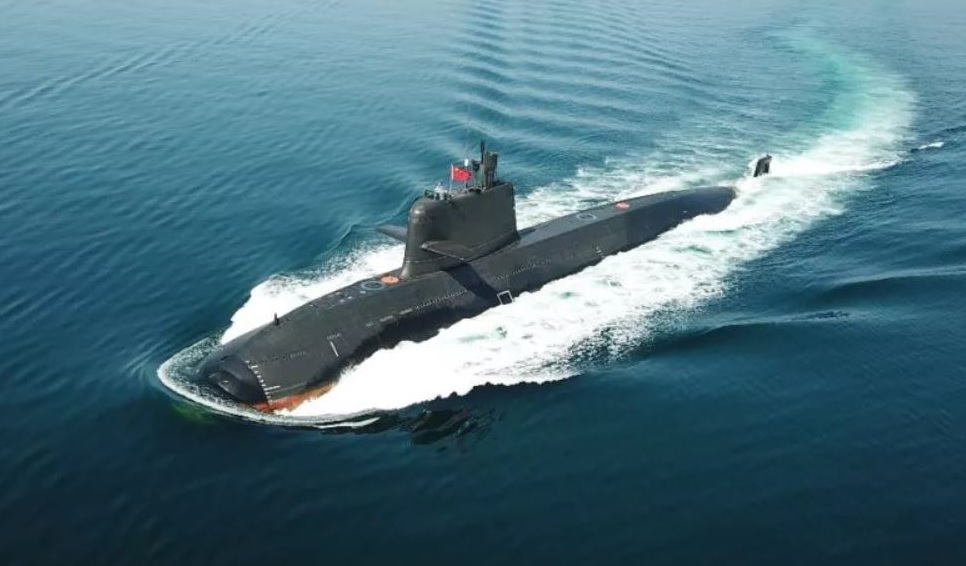Pakista Navy Confirms First Hangor-Class Chinese Submarines to Enter Service in 2026

Pakistan’s long-awaited Hangor-class submarines, built under a major defense collaboration with China, are set to enter service in 2026, according to Pakistan Navy Chief Admiral Naveed Ashraf. The announcement, made on November 2, 2025, marks a crucial milestone in Pakistan’s drive to modernize its naval capabilities and counter India’s maritime influence in the Indian Ocean Region (IOR).
Speaking to local media and citing reports from China’s Global Times, Admiral Ashraf confirmed that the first four Hangor-class submarines—constructed in Wuhan, China—will be delivered before assembly shifts to Karachi Shipyard & Engineering Works (KS&EW) for the remaining four. The induction will form the backbone of Pakistan’s next-generation underwater fleet, significantly enhancing the country’s strategic deterrence and sea denial capabilities.
A Deepening China–Pakistan Maritime Axis
The Hangor-class program is one of the most ambitious naval undertakings in Pakistan’s history, reflecting an expanding maritime partnership between Islamabad and Beijing. The project, worth an estimated $5 billion, involves the construction of eight submarines based on China’s Type 039A/041 Yuan-class (export variant S20) platform.
Four of these submarines are being built at China Shipbuilding & Offshore International Company (CSOC), while the remaining four will be assembled in Pakistan under a transfer-of-technology (ToT) agreement. This arrangement is designed not only to expand Pakistan’s submarine fleet but also to develop local industrial and maintenance expertise, allowing KS&EW to undertake future overhauls and indigenous production.
Specifications and Capabilities
The Hangor-class represents a major leap in technology and endurance compared to Pakistan’s older Agosta 90B and Agosta 70 submarines. While official specifications remain partially classified, available data and export model references provide a clear picture of its potent design:
-
Length: Approximately 76 meters
-
Displacement: Around 2,600 tons (submerged)
-
Propulsion: Diesel-electric with Air-Independent Propulsion (AIP) system, allowing extended underwater endurance up to three weeks without surfacing
-
Speed: Over 18 knots submerged
-
Crew: 38–40 personnel
-
Armament:
-
Six 533mm torpedo tubes
-
Capable of launching anti-ship cruise missiles (likely Babur-3)
-
Option to deploy mines and heavyweight torpedoes
-
-
Range: Estimated 8,000 km (with AIP)
-
Sonar and Combat Systems: Equipped with advanced flank array sonar, integrated combat management systems, and electronic warfare suites
The Babur-3 submarine-launched cruise missile (SLCM)—tested by Pakistan in recent years—may serve as the Hangor’s primary strike weapon, providing nuclear second-strike capability, a critical element of Pakistan’s credible minimum deterrence doctrine.
Strategic Implications
The Hangor-class induction directly reshapes the undersea balance in South Asia. India’s Project 75 Scorpène-class fleet and upcoming Project 75(I) submarines have given New Delhi a clear advantage in recent years. However, Pakistan’s move—backed by Chinese technology and logistics—seeks to narrow that gap.
For Beijing, the partnership is equally strategic. By arming Pakistan with advanced submarines, China ensures secure maritime access through the Arabian Sea and safeguards the sea lanes vital for the China–Pakistan Economic Corridor (CPEC) and Gwadar Port, which form the western link of the Belt and Road Initiative (BRI). The deployment of Hangor-class submarines strengthens China’s naval footprint near the Strait of Hormuz, a critical chokepoint for global energy supplies.
Industrial and Strategic Autonomy
Building half of the submarines at KS&EW marks a major milestone in Pakistan’s defense industrial base. The shipyard, previously engaged in refits and maintenance of Agosta-class vessels, is now evolving into a submarine production center capable of integrating complex Chinese systems domestically.
This transition supports Pakistan’s broader goal of technological self-reliance, while also providing valuable experience for future indigenous submarine programs.
✍️ This article is written by the team of The Defense News.






